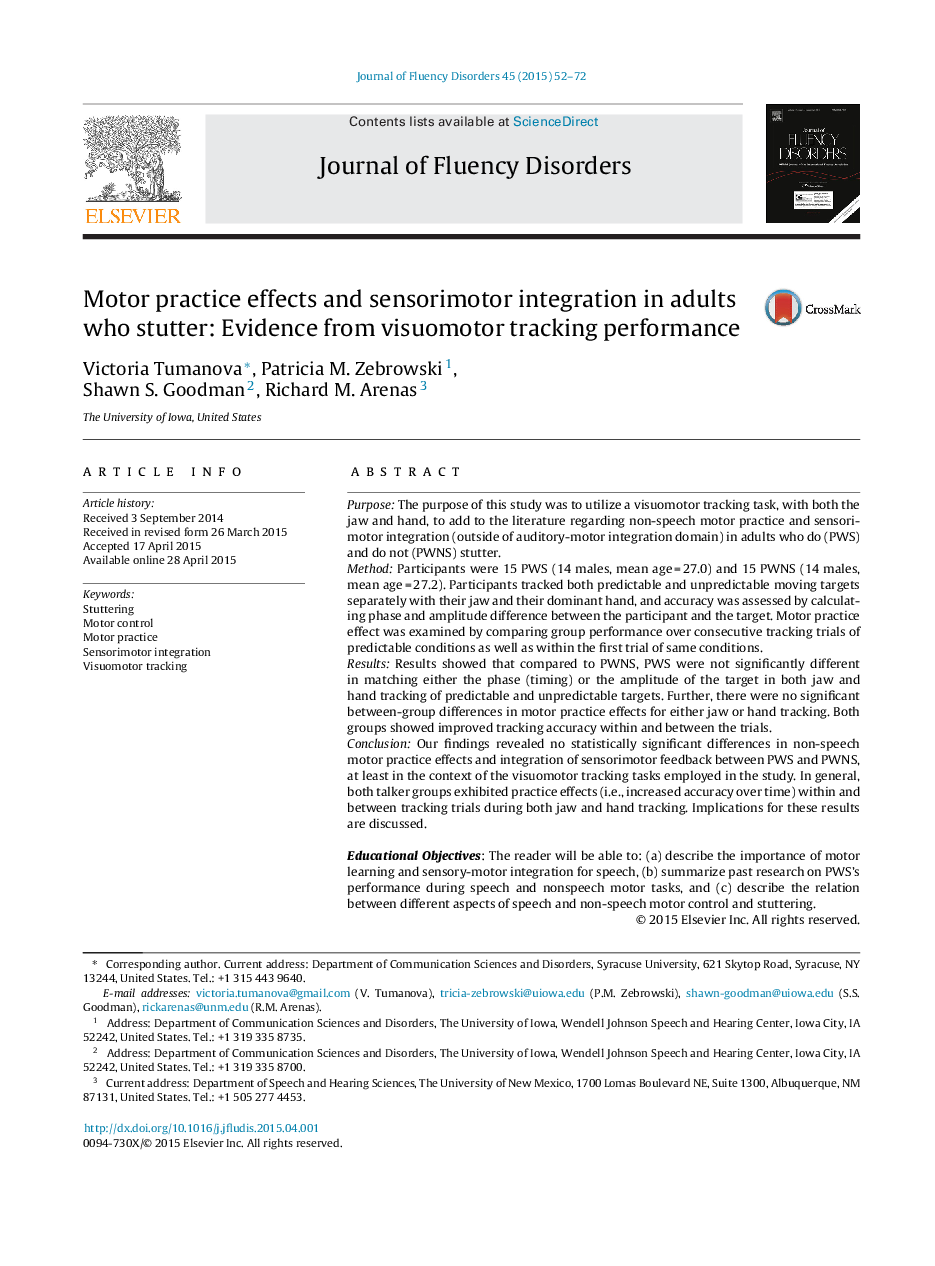| کد مقاله | کد نشریه | سال انتشار | مقاله انگلیسی | نسخه تمام متن |
|---|---|---|---|---|
| 911307 | 1473145 | 2015 | 21 صفحه PDF | دانلود رایگان |
• Participants tracked a moving target with their jaw and their dominant hand.
• Accuracy of tracking predictable and unpredictable target movements was assessed.
• PWS's tracking accuracy was not significantly different from PWNS.
• Both groups exhibited motor practice effects in both jaw and hand tracking.
PurposeThe purpose of this study was to utilize a visuomotor tracking task, with both the jaw and hand, to add to the literature regarding non-speech motor practice and sensorimotor integration (outside of auditory-motor integration domain) in adults who do (PWS) and do not (PWNS) stutter.MethodParticipants were 15 PWS (14 males, mean age = 27.0) and 15 PWNS (14 males, mean age = 27.2). Participants tracked both predictable and unpredictable moving targets separately with their jaw and their dominant hand, and accuracy was assessed by calculating phase and amplitude difference between the participant and the target. Motor practice effect was examined by comparing group performance over consecutive tracking trials of predictable conditions as well as within the first trial of same conditions.ResultsResults showed that compared to PWNS, PWS were not significantly different in matching either the phase (timing) or the amplitude of the target in both jaw and hand tracking of predictable and unpredictable targets. Further, there were no significant between-group differences in motor practice effects for either jaw or hand tracking. Both groups showed improved tracking accuracy within and between the trials.ConclusionOur findings revealed no statistically significant differences in non-speech motor practice effects and integration of sensorimotor feedback between PWS and PWNS, at least in the context of the visuomotor tracking tasks employed in the study. In general, both talker groups exhibited practice effects (i.e., increased accuracy over time) within and between tracking trials during both jaw and hand tracking. Implications for these results are discussed.Educational Objectives: The reader will be able to: (a) describe the importance of motor learning and sensory-motor integration for speech, (b) summarize past research on PWS's performance during speech and nonspeech motor tasks, and (c) describe the relation between different aspects of speech and non-speech motor control and stuttering.
Journal: Journal of Fluency Disorders - Volume 45, September 2015, Pages 52–72
